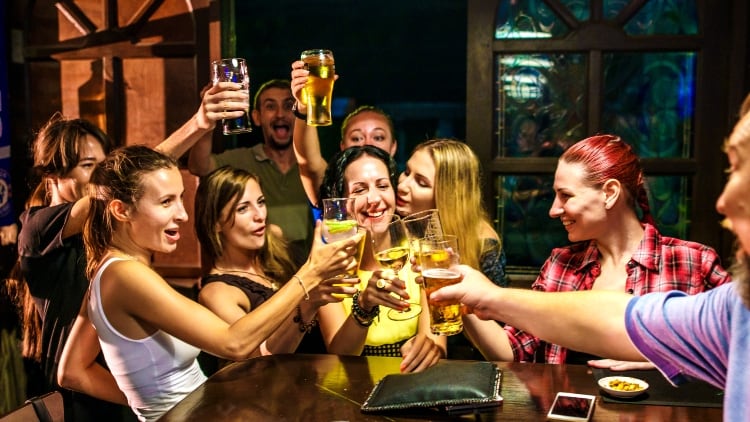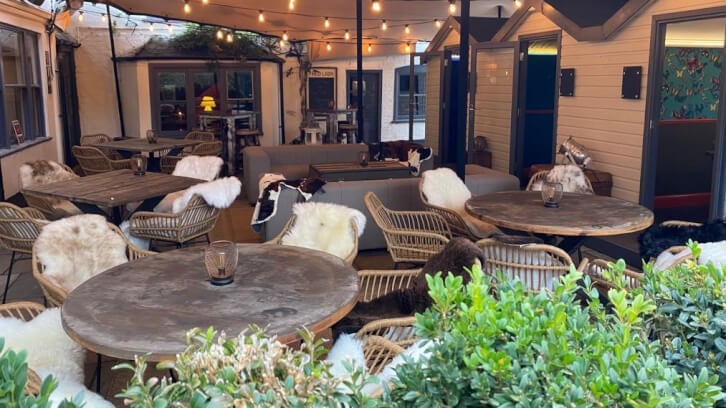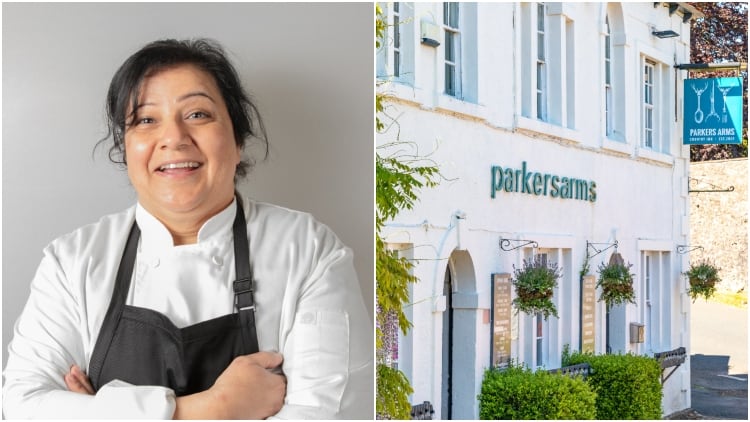For many of us, the Yuletide call to ‘eat, drink and be merry!’ no longer involves imbibing so much alcohol that we’re hungover until February.
But it’s not that we’re embracing sobriety. In fact, recent research by KAM in partnership with Lucky Saint indicates the number of teetotallers remains pretty constant.
Promotional content
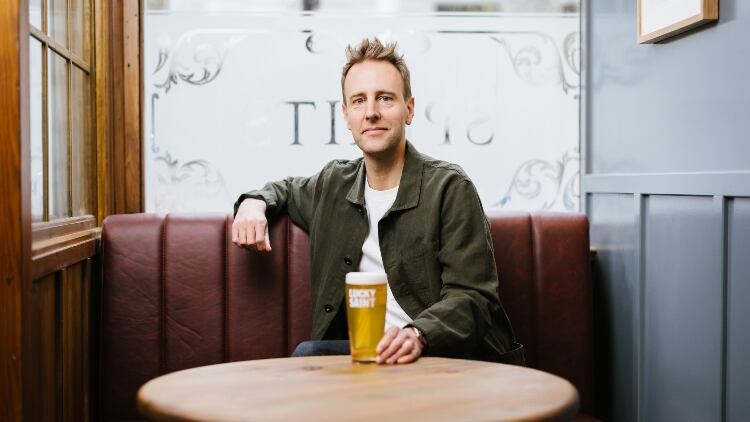
Make it a pint
Lucky Saint founder Luke Boase says: “The pint is one of the most iconic and important traditions in UK culture.
"Alcohol-free beer has traditionally only ever been in a bottle. As soon as alcohol-free beer is on draught, people who aren’t drinking can join in with their friends with a draught pint in their hands – they feel included. To me, the availability of alcohol-free beer on draught makes all beers equal for drinkers.
"We know that the individuals in a group who are moderating are now the decision-makers when deciding on a venue, so it’s essential to provide them with choice when it comes to alcohol-free.
"With moderation no longer reserved for just one month of the year, demand for quality alcohol-free options is set to accelerate this Christmas, and into 2024.”
Discover where to find Lucky Saint on draught using the Tap Map.
What’s changed is that many of us are altering our drinking habits and, in contrast to the national binge-drinking stereotype, we are becoming a nation of moderators.
Three quarters of UK adults are now moderating their alcohol intake, at least to some extent, and, according to KAM, 44% of us plan to drink less alcohol this Christmas than we did last year.
If we think of pubs purely as places where alcohol is sold, then these statistics could sound quite frightening but those of us who love them know pubs are so much more than that.
They’re the ‘original social network’, the heart of the community, and a lifeline for many. And with a diverse and engaging range of low and no alcohol drinks, a little bit of thought, and a few tweaks to menus and signage, pubs can make moderation into less of a threat and more of an opportunity.
Beer
According to the British Beer & Pub Association (BBPA), 85% of pubs now stock at least one low or no alcohol beer, and KAM’s research indicates that one in five adults (one in four men) drink low or no alcohol beer at least once a fortnight.
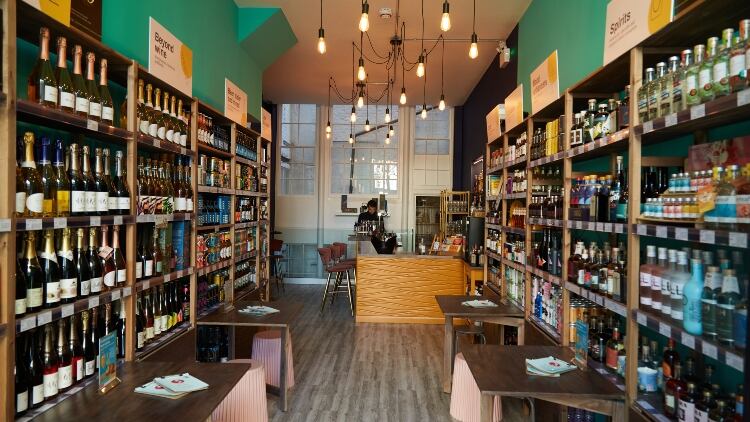
Case study

A shining Star on the bar
Operators of Electric Star pubs Steve Macri and Rob Star talk about how they chose an alcohol-free beer draught product for their Star of Bethnal Green site: “We were on the lookout for a good quality alcohol-free beer – we could see the direction of travel in the marketplace and customer demand increasing but none of the products we were seeing really worked for us.
“We then got introduced to Lucky Saint and really loved the quality of the liquid, the brand and the passion of the people of behind it.
“But to really bring the product and category to life, we wanted a draught product – because everyone wants a pint in a pub, right? So, we pretty much immediately began asking if and when we could get it on draught. To the point where I was regularly hassling them for it.
“We were very proud to be the first draught stockist at Star of Bethnal Green and have never looked back. It meant we could work with the Lucky Saint team on some great activations and training, and it really balanced out our beer offer.
“Our rate of sale has doubled over the past 12 months and I expect that to continue to grow, so it has been a great investment in our time and shows the strength of the product, brand and people behind it.”
If lager is your big seller, sourcing a low or no alternative is essential. There are plenty on the market including Heineken 0.0 and Becks Blue, along with Staropramen 0.0 and Cobra Zero, which both launched earlier this year.
Lucky Saint, brewed in Bavaria – arguably the home of lager brewing – took the market by storm when it launched five years ago, and Wiper & True’s Tomorrow, first released last December, is another excellent example.
However, there’s no need to just stop there. Alcohol-free brewery, Big Drop, produces a range of low and no beer styles, notably its Galactic Milk Stout, which has won prestigious awards, even when judged against full-strength versions.
Nirvana Brewery, based in east London, also produces a variety of styles including a core range of a lager, three pale ales, an IPA and a stout. And Mash Gang, led by creative brewer Jordan Childs, has spent the past couple of years tearing up the rulebook about what low and no beer looks and tastes like, producing old school West Coast IPAs, pastry stouts, California Commons, and more.
Guinness 0.0 is another alcohol-free success story and is available to the trade in 538ml cans, while Erdinger Alkoholfrei highlights the isotonic properties of low and no beer and is marketed as a thirst-quencher for people engaging in sport.
Sourcing interesting low and no beer, therefore, shouldn’t be a problem. But, nowadays, people want more than just one bottle, languishing in the back fridge like a shameful secret. Just like full-strength beer, they want choice, and they want to know that choice exists by seeing cans and bottles in prominent places and on menus.
Crucially, they also want to see beer on tap. In fact, according to KAM’s research, one in five UK adults say that if a venue had alcohol-free beer on tap, this would encourage them to try it.
“The pint is one of the most iconic and important traditions in UK culture,” says Lucky Saint founder Luke Boase. “Beer just tastes better out of pint glasses.”
It does, and if it’s easy to switch between low and no beer, and regular beer, many people will choose to do just that, sometimes even alternating or mixing during the same session, thus enabling them to stay in your venue – spending money – for that little bit longer.
And, according to KAM’s research, increasing the visibility of your alcohol-free offering – by putting it on tap alongside your regular beers, for example – could be crucial in attracting an estimated additional 123m visits to the on-trade each year.
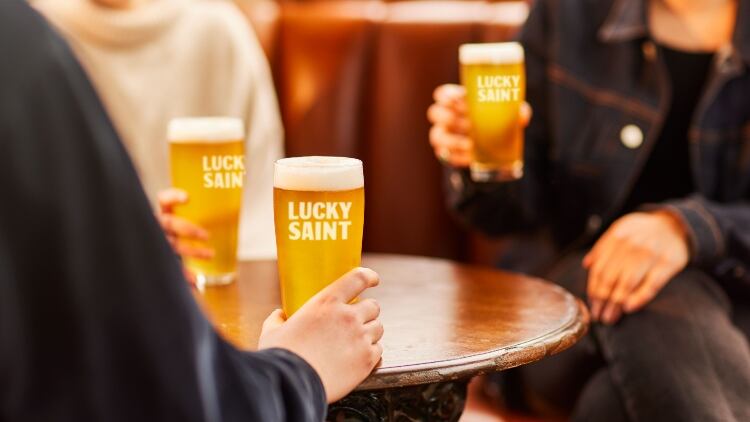
Cider
The alcohol-free world has come of age. Partly that’s in terms of the improved quality and the seriousness with which the sector is now taken. But partly this is about the flavours consumers expect when they order a low or no drink. Many people who are moderating are not looking for a sickly sweet children’s-style drink – they want something more suitable for an adult palate.
“For me, the most successful low and no ciders are made with fresh juice rather than juice concentrate, using tannic cider apple varieties,” suggests founder of the School of Booze and the UK’s first accredited Cider Pommelier, Jane Peyton. “Tannins give mouthfeel and body and tend to have robust flavours.”
Maiden Mill is the world’s first solely non-alcoholic cider producing company of its kind and produces two 0.5% ABV sparkling ciders: ‘Flyer’, a medium dry cloudy cider, and ‘Voyage’, a medium golden cider. Crafty Nectar and Wise Bartender have also teamed up to produce what they refer to as the ‘unicorn’ of the alcohol-free world, a 0.5% ABV cider with all the taste of an alcoholic version.
Thatchers Zero has won multiple accolades, including a ‘commended’ in this year’s inaugural World Alcohol Free Awards, and for fans of fruit ciders, Rekorderlig Strawberry-Lime also comes in an alcohol-free iteration.
Wine
“The wine sector is the one that’s really touted as the next big thing,” explains Nick Worthington, co-founder of Drinks One consultancy.
“There’s been massive developments in quality. Non-alcoholic wine used to be sort of very sweet and unbalanced… that’s changed with technology and developments [and] you’re seeing some great brands coming through in the non-alcoholic wine space.”
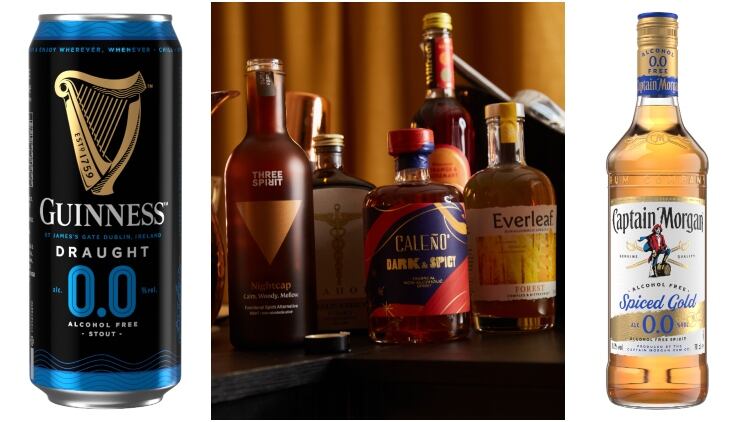
Wise Bar Trader carries more than 100 quality wines, including Moderato, a French brand that produces a red, a white, a rosé and a sparkling wine, perfect for festive celebrations.
Australian brand Newblood produces an aromatic Chardonnay with notes of honeysuckle and oak and a crisp finish, as well as a red and a rosé, both of which received commendations in the World Alcohol Free Awards. And, with Christmas in mind, the range produced by Ish includes Glogg, a mulled wine that will definitely set the mood for the festive season.
When it comes to low and no alcohol wine, it need not always be a straight swap from regular to low and no varieties. Sparkling teas from the likes of Saicho or Copenhagen have the tannins and structure to work equally well in the wine space, and Bemuse’s Honey Wine is also an interesting alternative.
If no and low wines and wine alternatives are included on wine lists and chalkboards alongside regular, full-strength varieties, they have the potential to attract substantial extra spend on occasions when people would not usually be drinking. For example, at lunchtimes, or earlier in the week, many people might otherwise choose to drink a soft drink – or even tap water – with their meal.
KAM’s research found the on-trade could be missing out on a potential £800m in lost revenue by not encouraging people to trade up as a massive 42% of people say they would order a low or no version of an alcoholic drink if the venue made them aware of it.
Spirits & cocktails
Recent research by CGA in association with CROSSIP indicates spirits will be leading growth in the low and no category over the next five years so it’s an important one to get right. When it comes to spirits, we can talk broadly in terms of two types:
The first are imitators, or low and no versions of drinks we already know. For example, both Lyre’s and Sober Spirits produce low and no gins, rums, and whiskies (plus a number of other spirits in Lyre’s case). Both Tanqueray and Gordon’s produce alcohol-free gin and, at the end of August, Diageo added Captain Morgan Spiced Gold 0.0% Alcohol Free Spirit to its range.
The second category is sometimes called ‘spirit adjacent’. Although these can often be consumed in much the same way as spirits, they do not mimic existing drinks but bring a completely new range of flavours to the bar, albeit sometimes inspired by existing categories. For example, CROSSIP comes in three varieties: Fresh Citrus, Pure Hibiscus and Dandy Smoke, which The Independent has named the Best Overall Non Alcoholic Spirit of 2023. Everleaf also comes in three varieties: Forest, Mountain and Marine, all of which won Great Taste Awards in 2023.
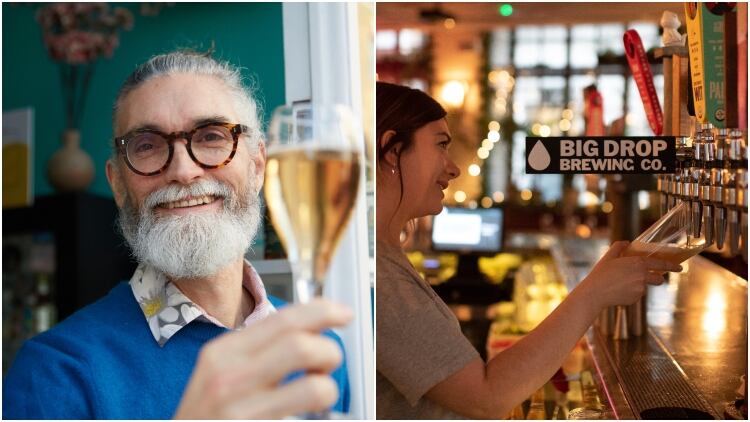
Some drinks in the spirit adjacent category – and indeed other low and no options, including some beer, sodas and kombuchas - may be ‘functional’ drinks in that they contain ingredients such as CBD (Cannabidiol), adaptogens (substances thought to help the body adapt to stress), or nootropics (substances that claim to boost brain function).
Three Spirit, for example, utilises ingredients such as Lion’s Mane mushroom, ashwagandha and ginger to create a range of drinks that energise, relax, or elevate the mood, and Sentia, the brainchild of renowned scientist, Professor David Nutt, targets GABA (gamma-aminobutyric acid) activity in the brain in order to create feelings of relaxation and sociability.
“There are three bits of learning that need to go on in the sector,” explains Josh Kelly, brands relations manager for Club Soda, the UK’s mindful drinking specialists. “How do you serve an alcohol-free spirit? How do you look after an alcohol-free spirit? And what language do you use around an alcohol-free spirit?”
In answer to his first question, although these drinks can be substituted in place of alcoholic versions, make sure you’re aware of the volume of spirit required. Many imitators require a larger measure (or less mixer) than regular spirits in order to achieve the same flavour profile. If you simply replicate regular measures, you run the risk of producing unbalanced cocktails, or of customers failing to reorder because they found their drink watery and unsatisfying.
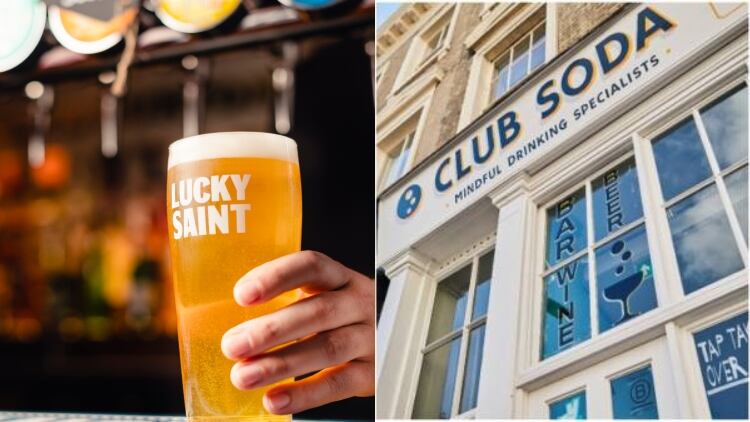
Next, in terms of looking after spirits, be aware that many low and no spirits need to be refrigerated once opened. Bottles on the back bar alongside the regular spirit range are good for visibility but open bottles must be stored in the fridge to keep them fresh.
Finally, it’s important to ensure staff have adequate training and know what language to use to sell no and low alternatives effectively. For example, at Torstigbar, a smart, Scandinavian-inspired, low-alcohol bar in Brighton, the menu clearly states whether each drink has mood-altering properties or is reminiscent of alcohol.
“For someone that does drink alcohol, they’ll want a burn and a kick,” explains co-founder, Emmi Cousins, “But someone who’s in recovery… will be like, ‘I’m a recovering alcoholic. It’s got to be 0.0% and I don’t want anything that reminds me of alcohol.’ It’s very much catering to individual needs.”
In line with contemporary thinking, the Torstigbar menu does not mention the word ‘mocktails’ but rather refers to its cocktails as cocktails. Again, this is related to the coming-of-age of the sector, and the use of adult flavours for adult palates, thus requiring adult descriptors.
Ahead of the curve
“Get ahead of the curve.” urges Josh Kelly. “In December, start talking about what you’re doing for ‘Dry January’.”
Christmas is the perfect time to showcase your low and no offering to potential moderators or abstainers.
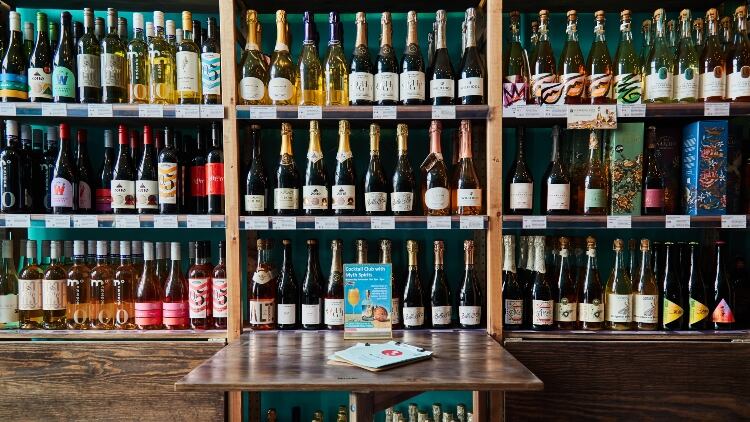
Start treating your low and no options as equal to your regular brands in terms of visibility and the information you impart to customers. Offer small tasters if you can. If you fail to do this, many who visit during the festive period will assume you don’t stock low and no options and so avoid your venue when they’re moderating in the new year.
The low and no sector is ever-changing but it’s perhaps the most exciting and innovative on the bar. If you need help with curating your low and no range, get in touch with Club Soda or Wise Bar Trader who can offer support and advice, or perhaps visit somewhere like Torstigbar in Brighton for inspiration or the Lucky Saint in Marylebone, which heroes the low and no category.
This is a trend good pub operators can no longer ignore, so get involved and enjoy exploring it.

